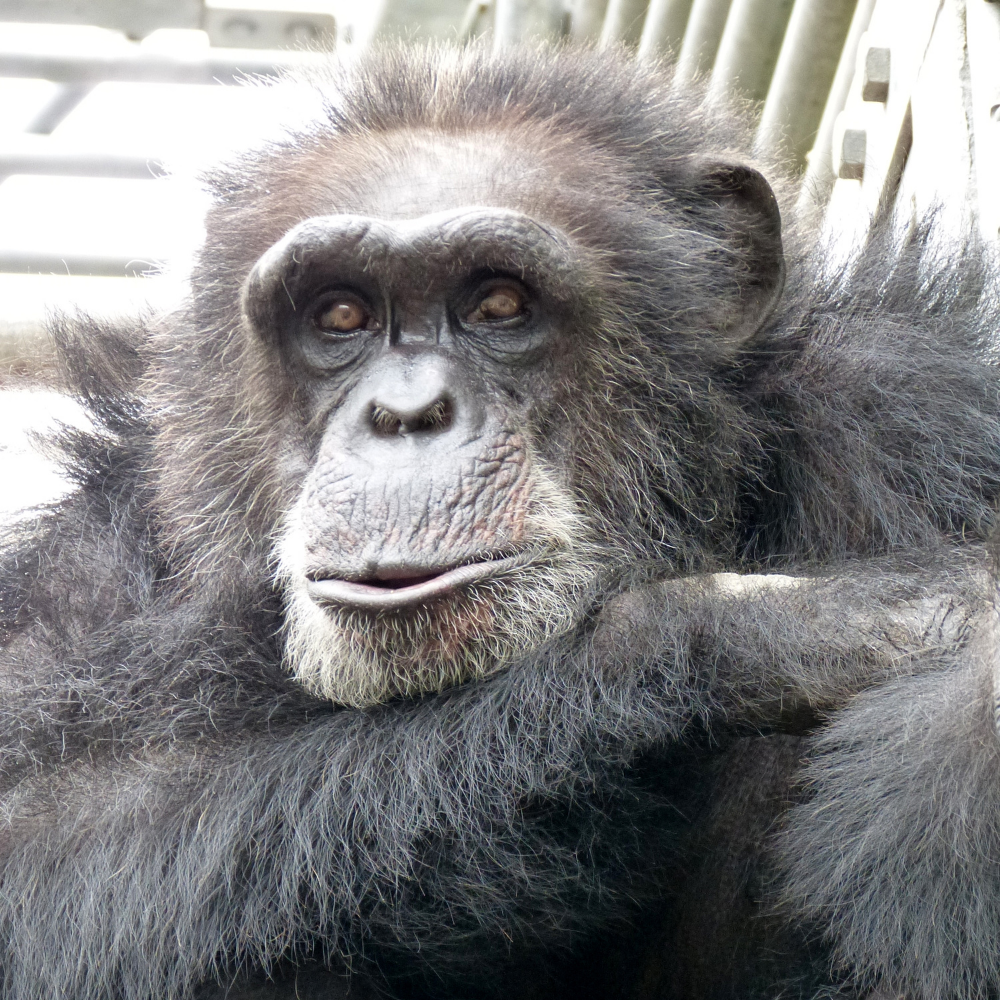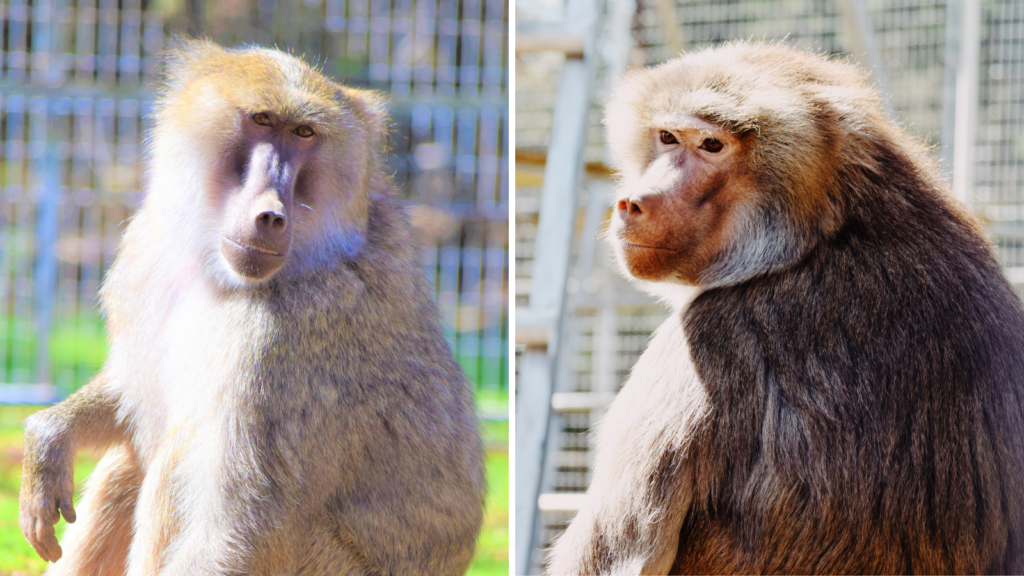Animals in Entertainment
Primates and other animals used in movies, on TV or in circuses are coerced to behave unnaturally for our amusement. Some circuses greenwash what they do by claiming to breed endangered species. Generally, they ignore the key point of animal rights: Life matters but freedom matters just as much.
With current computer graphics imagery (CGI), animals no longer need to be exploited in film. For example, in 2016, director Jon Favreau directed a new adaptation of The Jungle Book with only one live-action performer and an entire jungle full of CGI animals, and the result was spectacular.
When live animals are exploited for circuses, TV and movies, many viewers are unaware of the conditions behind the scenes.
During the climactic chariot race in Ben-Hur, for example, nearly 100 horses were killed. Incidents such as this provoked the involvement of overseers such as the American Humane and the American Society for the Prevention of Cruelty to Animals. Nowadays we often see the statement: No animals were harmed in the production of this show. Yet there have been cases where animals have been harmed, even killed, but because it might not have been deliberate the closing credit avowal is approved.
In November of 2013, The Hollywood Reporter published a scathing investigation that supported what Friends of Animals has been saying for years, that monitoring is inadequate and the disclaimer, “all animals were treated humanely,” is a sham.
Most people are unaware that the American Humane, which was previously named The American Humane Association that had been funded by the Screen Actors Guild, had a glaring conflict of interest. It has been criticized for judging the treatment of animals in films by the filming that happens in front of them, not the lengthy training, housing or living conditions of the animals. As a result, animals used in film and television are frequently put in dangerous situations, injured or killed.
Obvious physical harm is not the only form of harm nonhuman animals experience—they suffer psychological damage as well. The long-term damage that is done results in negative and neurotic behaviors and an inability to socially interact with other chimps.

“Every young chimp you see in any type of entertainment was pulled from its mother prematurely. Sometimes chimps stay with their families their entire lives in the wild,” says Brooke Chavez, PPI’s executive director.
In 1986 five chimpanzee stars of the film Project X were brought to Primarily Primates after a lawsuit against the film’s producers alleged abuse of the chimps by their trainers. When the filming ended, Twentieth Century Fox planned to sell the chimpanzees to a laboratory—a reprehensible irony as the lucrative film focused on a young chimpanzee’s escape from radiation tests in an Air Force laboratory.
Don Barnes, a sensible technical advisor for the studio, warned Twentieth Century Fox of the public outcry likely to follow a transfer of the chimpanzees to a lab.
He led the crusade to bring the chimps to PPI, and blasted the AHA, which defended the trainers and denied the abuse, giving their “no animals were harmed” seal of approval.
Primarily Primates prepared to build a new enclosure for $65,000, but the film company offered just $35,000, so it took some time until enough funds came in and all five could be accommodated.
One of the chimps, Willie, the star of the film, is still alive and cared for 27 years later at our sanctuary. Willie still runs away in fear when he sees cameras. Here is his story below and more about other residents who came from the entertainment industry to PPI.
Willie
Willie arrived with the four other chimpanzees owned by Twentieth Century Fox Film Corporation. All had been trained to perform in Project X, a popular film about chimpanzees used for Air Force research. In the film’s story an air force pilot and an animal researcher risk their lives to save chimpanzees from hazardous experiments.
Willie was born at San Antonio’s Southwest Foundation for Biomedical Research. He was with his mother for only six months, then removed to the lab’s nursery. He was transferred to the entertainment business around the age of three.
Willie’s most significant ally of the group who came to PPI was Okko, who died from a heart attack in 2017. An imposing yet well-socialized individual, Okko always kept the peace among his spirited companions. Okko especially loved red apples and romaine lettuce.
Okko was born Nov. 25, 1980 a zoo in the Netherlands and was promptly exhibited. As young animals reach maturity, they lose their entertainment appeal. The back door opens and used animals get sold to dealers. Thus, Okko was traded away to a New York dealer, and sold again to Twentieth Century Fox.
Today, Willie’s grass-bottomed habitat is 60 feet long and 40 feet wide and is alongside three other enclosures of the same attractive design that are full of climbing structures and high ceilings overlooking a pond.
The most joyful time of day at the sanctuary is the arrival of caregivers who carry wheelbarrows of carrots, lettuce, broccoli, apples, pears, melons, plums, bananas and other fruits and vegetables. A few chimpanzees typically sit high, waiting to spot them. Screams follow. Within seconds, a chorus of many more chimpanzees fills the air while they race around their habitats, hugging each other, or stomping the ground as though to say, “Hurry up!”
Walter and Baxter
Walter and Baxter, two especially handsome male chimpanzees, were once the stars of a German television show. In reminders of their tumultuous pasts, they do back-flips, clap their hands and put on smiles (all signs of training and fear of their owners).
Walter was born at New York University in 1992 at a lab for experimental medicine that is now defunct; Baxter was born in1999. Both became property of The Buckshire Corporation—a Pennsylvania-based company that leased animals primarily for scientific and cosmetic testing.
The Buckshire Corporation leased the pair to a German television show called “Martin’s Working Wildlife”—which trained them to perform tricks for television audiences. When they reached an age where they were difficult to control, they were returned to the United States and eventually they found their way to Primarily Primates.
At PPI, they get to make choices about how they spend their day and they are guaranteed a life of dignity.

Jack and Janet
Jack and Janet are a half brother-sister baboon duo who were privately owned as pets and used in the entertainment industry in Los Angeles before being relinquished to a California sanctuary because of the cost to keep them (California required an expensive insurance policy, so their owner eventually turned them over).
When the sanctuary was forced to shutter for financial reasons, PPI rescued Jack and Janet among several other animals. Janet is a hamadryas baboon, while Jack is a hamadryas and olive hybrid. They were slowly introduced to our resident baboons Olive and Saffron, both of whom are olive baboons. Janet and Saffron hit it off immediately; Jack adores Saffron, too. Olive is a little more cautious but warming up to them each day.
